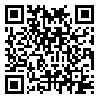Volume 13, Issue 25 (9-2023)
JRSM 2023, 13(25): 74-88 |
Back to browse issues page
Download citation:
BibTeX | RIS | EndNote | Medlars | ProCite | Reference Manager | RefWorks
Send citation to:



BibTeX | RIS | EndNote | Medlars | ProCite | Reference Manager | RefWorks
Send citation to:
Nabavinik M, Taheri H, Saberi Kakhki A, Saberi Kakhki H. Evidences Against Generalized Motor Program by Co-Activation Pattern of Arm Muscles After Massive Amount of Practice. JRSM 2023; 13 (25) :74-88
URL: http://jrsm.khu.ac.ir/article-1-3071-en.html
URL: http://jrsm.khu.ac.ir/article-1-3071-en.html
1- University of Mazandaran , m.nabavinik@umz.ac.ir
2- Ferdowsi University of Mashhad
3- Islamic Azad University of Mashhad
2- Ferdowsi University of Mashhad
3- Islamic Azad University of Mashhad
Abstract: (5351 Views)
Massive amount of practice over many years raise the question that handling class of action by generalized motor program may modify over years. The purpose of the present study is to provide evidences to investigate this hypothesis by examining the pattern of co-activation and agonist to antagonist activity ratio. Seven experienced darts players were asked to execute from standard dart distance (fourth distance) and six other farther and nearer distances, making 252 throws. Relatively, the results showed that at least in five from the seven samples, there was a significant difference in muscle co-activation between fourth and six other distances. These findings do not support the existence of a generalized motor program at fourth distance so that performance of elite players met limited generalizability
Keywords: Electromyography, Generalized motor program, Massive amount of practice, Especial skills, Muscle co-activation
Type of Study: case report |
Subject:
motor behavior
Received: 2020/11/25 | Accepted: 2022/11/15 | ePublished ahead of print: 2022/11/15 | Published: 2023/09/11
Received: 2020/11/25 | Accepted: 2022/11/15 | ePublished ahead of print: 2022/11/15 | Published: 2023/09/11
References
1. 1. Schmidt RA. Motor schema theory after 27 years: reflections and implications for a new theory. Res Q Exerc Sport. 2003;74(4):366-75. [DOI:10.1080/02701367.2003.10609106]
2. Breslin G, Hodges NJ, Kennedy R, Hanlon M, Williams AM. An especial skill: Support for a learned parameters hypothesis. Acta psychologica. 2010;134(1):55-60. [DOI:10.1016/j.actpsy.2009.12.004]
3. Breslin G, Schmidt RA, Lee TD. 19 Especial skills. Skill Acquisition in Sport: Research, Theory and Practice. 2012:337.
4. Keetch KM, Schmidt RA, Lee TD, Young DE. Especial skills: their emergence with massive amounts of practice. J Exp Psychol Hum Percept Perform. 2005;31(5):970-8. [DOI:10.1037/0096-1523.31.5.970]
5. Nabavinik M, Abaszadeh A, Mehranmanesh M, Rosenbaum DA. Especial Skills in Experienced Archers. Journal of Motor Behavior. 2017:1-5. [DOI:10.1080/00222895.2017.1327416]
6. Nabavinik M, Bahram A, Taheri HR, Zolghadr M. Investigation of visual context hypothesis on especial skills in the favorite location of experienced players. 2016;6(11):20-8.
7. Kashani V, Nik Ravan A, Azari M. Identifying Especial Skills for Air Gun Shooting in Skilled Male and Female Shooters. Annals of Applied Sport Science. 2016;4(4):59-67. [DOI:10.18869/acadpub.aassjournal.4.4.59]
8. Fay K, Breslin G, Czyż SH, Pizlo Z. An especial skill in elite wheelchair basketball players. Human Movement Science. 2013;32(4):708-18. [DOI:10.1016/j.humov.2012.08.005]
9. Simons JP, Wilson JM, Wilson GJ, Theall S. Challenges to cognitive bases for an especial motor skill at the regulation baseball pitching distance. Research quarterly for exercise and sport. 2009;80(3):469-79. [DOI:10.1080/02701367.2009.10599585]
10. Nabavinik M, Taheri HR, Saberi Kakhki A, Kobravi H. Special motor program in the experienced dart players: support from kinematic data. Physical education of students. 2017;21(6):287-93. [DOI:10.15561/20755279.2017.0605]
11. Le P, Best TM, Khan SN, Mendel E, Marras WS. A review of methods to assess coactivation in the spine. Journal of Electromyography and Kinesiology. 2017;32:51-60. [DOI:10.1016/j.jelekin.2016.12.004]
12. Shea CH, Wulf G. Schema theory: a critical appraisal and reevaluation. J Mot Behav. 2005;37(2):85-101. [DOI:10.3200/JMBR.37.2.85-102]
13. Heuer H. Invariant relative timing in motor-program theory. In: Fagard J, Wolff PH, editors. Advances in Psychology. 81: North-Holland; 1991. p. 37-68. [DOI:10.1016/S0166-4115(08)60759-1]
14. Keetch KM, Lee TD, Schmidt RA. Especial skills: specificity embedded within generality. J Sport Exerc Psychol. 2008;30(6):723-36. [DOI:10.1123/jsep.30.6.723]
15. Criswell E. Cram's introduction to surface electromyography: Jones & Bartlett Publishers; 2010.
16. Lohse KR, Sherwood DE, Healy AF. How changing the focus of attention affects performance, kinematics, and electromyography in dart throwing. Human Movement Science. 2010;29(4):542-55. [DOI:10.1016/j.humov.2010.05.001]
17. Johnson MT, Kipnis A. Evoked EMG signal processing. Google Patents; 1990.
18. Carter M, Shapiro D. Control of sequential movements: evidence for generalized motor programs. Journal of Neurophysiology. 1984;52(5):787-96. [DOI:10.1152/jn.1984.52.5.787]
19. Czyz S, Zvonar M. The development of generalized motor program in constant and variable practice conditions2018. [DOI:10.3389/fpsyg.2019.02760]
20. Nabavinik M, Taheri H, Kakhki AS, Kobravi H. Supporting generalized motor program theory at the behavioral level based on individual regression analysis: findings against especial skill effects. . Journal of sport managment and motor behavior. 2020:-.
21. Hemayattalab A, Mohammadzadeh H. The Effect of General and Specific Practice on the Presence of Special Motor Skill in Basketball Free Throw Motor learning and development journal. 2016;8(2):335-45.
22. Breslin G, Hodges NJ, Steenson A, Williams AM. Constant or variable practice: Recreating the especial skill effect. Acta psychologica. 2012;140(2):154-7. [DOI:10.1016/j.actpsy.2012.04.002]
Send email to the article author
| Rights and permissions | |
 | This work is licensed under a Creative Commons Attribution-NonCommercial 4.0 International License. |







